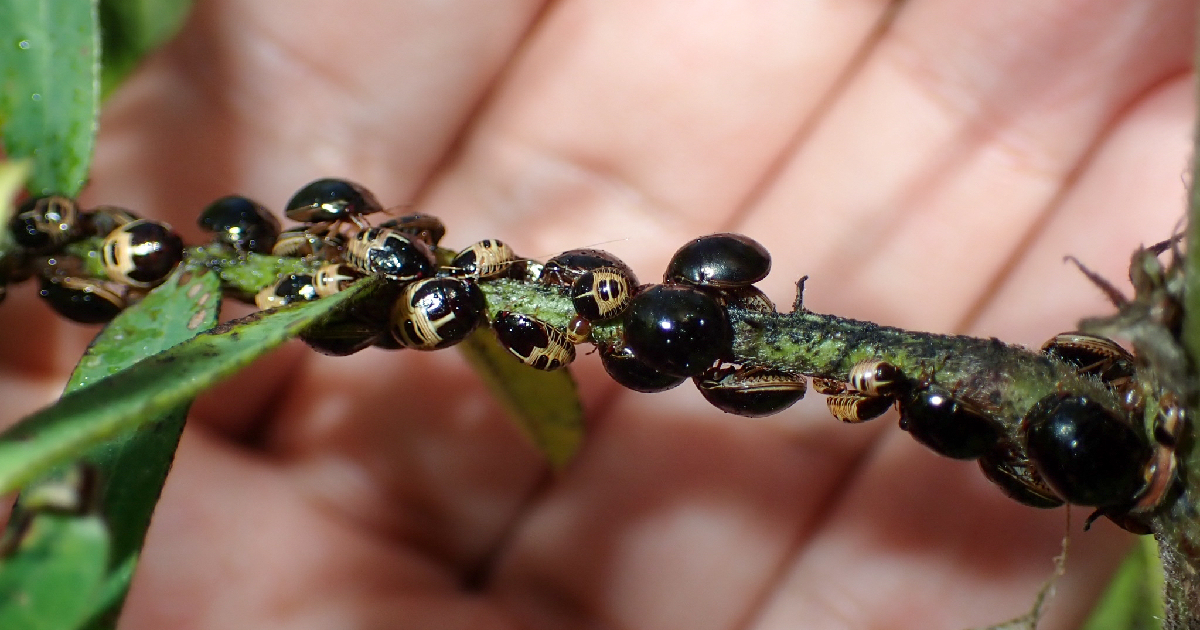A black bug infestation is wreaking havoc on bean crops in various municipalities in the province of Guantánamo, according to official sources. First reported in Cuba in early June, the invasive Brachyplatys subaeneus pest has damaged 55 hectares of pigeon peas, kidney beans, black-eyed peas, and common beans in the municipalities of Imías, Maisí, and Baracoa, as reported by the local broadcaster Radio Guantánamo.
Known as the black bean bug, this pest feeds on the leaves and stems of plants, both in its nymph and adult stages. This exotic pest causes the wilting and discoloration of crops, in addition to stunting their growth.
Judith Medina Peláez, head of the Department of Plant Health, indicated that so far the arthropod is not listed as an official quarantine pest in Cuba. A quarantine pest is defined as one that can potentially have significant economic impact on the threatened area, according to the International Plant Protection Convention.
However, effectively controlling the black bug poses a challenge for the Agriculture Delegation in Guantánamo, as acknowledged in a brief note by the radio station.
Control Measures and Challenges
To contain the spread of the pest, the chemical products Bimida, Bunker, and Cypermethrin are being applied, along with the use of Beauveria bassiana, an entomopathogenic fungus that allows for the biological control of various pest populations.
According to Radio Guantánamo, increased monitoring of bean planting and the training of farmers, technicians, and plant health experts on measures to curb the pest's proliferation are also underway.
The Guantánamo newspaper provided no further details on the emergence of this pest in Cuba, nor on the potential medium- and long-term impact on bean production. The presence of this invasive species in the country has barely been mentioned by other official media. In mid-June, the broadcaster Radio Cumanayagua reported on a training session for producers, specialists, and plant health technicians on the pest in the province of Cienfuegos.
Beans, a staple food in the basic Cuban diet, are among the products whose prices have seen a significant rise due to increasing inflation in the national economy in recent years.
Meanwhile, the government consistently delays the distribution of beans sold through the ration book system, often without clear reasons, or reduces the already meager quotas per person to laughable amounts. This forces the population to turn to the non-state market, where they fall victim to exorbitant prices that are beyond their financial reach.
Frequently Asked Questions about the Black Bug Infestation in Guantánamo
Given the severity of the black bug infestation and its impact on bean crops in Guantánamo, here are some frequently asked questions and their answers.
What is the black bean bug?
The black bean bug, or Brachyplatys subaeneus, is an invasive pest that feeds on the leaves and stems of bean plants, causing wilting, discoloration, and stunted growth.
Which areas in Guantánamo are affected by the infestation?
The municipalities of Imías, Maisí, and Baracoa in Guantánamo are affected, with 55 hectares of bean crops damaged.
What measures are being taken to control the pest?
Chemical products such as Bimida, Bunker, and Cypermethrin, as well as the biological control agent Beauveria bassiana, are being used to contain the pest.
